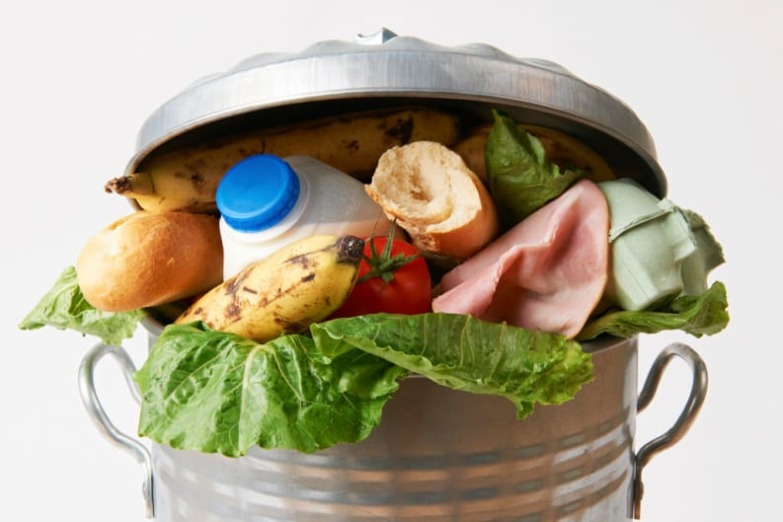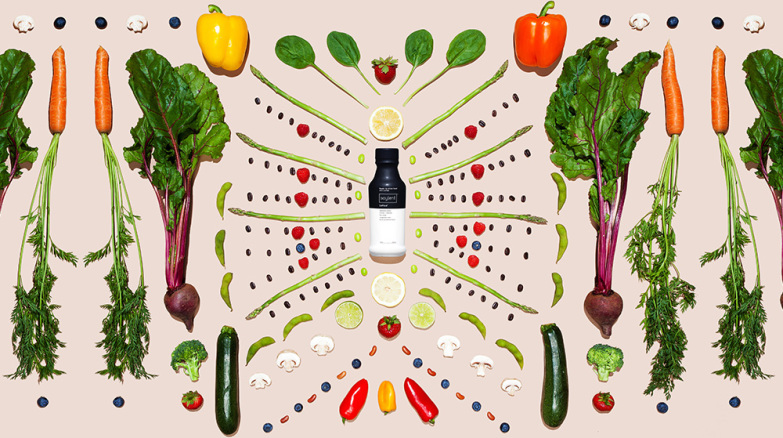Here at Foodie, we pride ourselves on being firmly attuned to all things food, and that includes looking into the future – and we don’t just mean contemplating what we will eat for our next meal. So, what do our Foodie feelers tell us?
Here are five key trends that we think (and hope) will continue to gain momentum and shape the future of how we eat:
#1 Edible Everything

Shockingly, around 33–50% of all food produced globally is never eaten; in Hong Kong alone we waste some 3,600 tonnes of food in a single day. It’s bad enough that unspoilt food is being discarded even as poverty keeps millions hungry; food waste also contributes to irreversible environmental damage given the large amounts of greenhouse gases associated with food production and landfills. Most food waste is unnecessary and avoidable. Thankfully, more efforts are being made to address the problem.
Edible cutlery
Disposable plastic cutlery is as ubiquitous as it is environmentally damaging. So why not have utensils that can be (tastily) disposed of (in our stomachs)? Enter Bakeys – a company producing edible spoons made from rice, wheat and sorghum flours that can be consumed after you finish your meal.
Edible packaging
Even as we talk about food waste, let’s not forget the waste from food packaging. One solution has been to transform food into packaging materials. Case in point: Ecovative has used mushrooms (specifically the mycelium fungus) to make a safe and sustainable styrofoam substitute that’s 100% compostable.
(Re)distribute, not discard
One man’s food waste is another man’s meal. While food retailers frequently end up discarding fresh food that cannot be sold (e.g., 'ugly' fruits, unused and expiring food), there are now a growing number of campaigns and platforms to redistribute these items. For example, Foodie Forks 2017 Ethical Eats Editors' Choice winner Food Savior is an e-marketplace for restaurants to sell unused food portions at a discount.
#2 Pollution-free Protein

Many of us love our meat and seafood, but much of this is actually produced at growing detriment to the environment. Traditional livestock farming accounts for some 18% of global greenhouse gas emissions, and it can take over 1,200 gallons of water to produce a single eight-ounce steak (it’s not just the water cows drink – it’s also the water that goes into producing their feed). For reference: the same amount of chicken uses around 10 times less water. Seafood is also problematic – about 90% of the world’s oceans are overfished, impacting the entire ocean ecosystem. It’s unlikely the world’s appetite for meat and seafood will disappear anytime soon, but the growing prevalence of better (and equally tasty) alternatives may help to pave the way.
Meatier mock meat
Scientists and start-ups have long sought to recreate the taste and texture of meat using plant substitutes, and there have been some exciting breakthroughs like the Beyond Burger. Elsewhere, insects continue to pack a powerful protein punch (if we can get over the psychological barrier), while lab-grown meat (yep, using cultured animal cells to grow meat in a lab) is the next frontier.
Sustainable seafood
It’s not a new trend, but we expect the focus on sustainable seafood (i.e., seafood caught/farmed in ways that minimise harmful environmental impacts) to gain greater ground. Platforms such as the Good Fish Guide App, a database documenting the risk levels of different seafood species, will help to guide consumers along.
#3 Even Easier Eats

Science and technology have long helped to facilitate the ease with which we eat (thank you, microwaves, vending machines and food delivery apps) and show no sign of slowing down. While the new waves of faster food may not be winning Michelin stars anytime soon, they can arguably help to improve access to important nutrients and even reduce food waste.
Ultra-convenient food
Silicon Valley’s Soylent purports to contain all the nutrients you need to survive (just add water to the bagged powder; or if that’s still too hard, it also comes in liquid versions), helping to save the time, space and money associated with traditional cooking and dining. Elsewhere, Go Cubes have converted coffee into chewable gummies. Each cube packs the caffeine equivalent of half a cup of coffee alongside essential B vitamins and costs less.
Machine meals
On the horizon and coming soon to a kitchen and/or airspace near you: 3D printers that can speedily produce meals customised to your calorie and nutritional needs, or drones delivering food even more quickly than our current crop of delivery drivers.
#4 Conscious Cuisine

Thanks to education and easier access to information through the Internet, more of us are now better informed about where our food comes from, what it comprises and its impact on our health and the environment. Driven by (and in turn helping to drive) the growing demand for food that is healthier and more ethical, we are seeing more eateries and enterprises with a conscience.
We’re stoked to say that there are so many healthy, ethical and sustainable trailblazers in Hong Kong. Check out our specially curated list here.
#5 The Future is Flexitarian

As we become more aware about the impact of our food choices, many of us will strive to incorporate ethical and nutritional goals into our consumption habits. But who are we kidding – strict diets require more willpower, money and effort than most of us can afford to sustain long term.
Meet flexitarianism: a new form of mindful moderation where we eat healthily and ethically while still leaving some room for indulgence. Think 'veggans' (vegans who eat eggs) and part-time paleos – you get the drift. It’s not just individual preferences; even restaurants are embracing this trend (Arcane’s meat-free Monday vegetarian tasting menu is a good example).

Still with us? Welcome back to 2017. While some pretty scary statistics loom ahead, there are also glimmers of hope as we slowly but surely become more future focused in seeking healthy and sustainable food that's still as tasty as ever. One small step for each man, woman and restaurant could just about amount to one giant leap for humankind's future.











